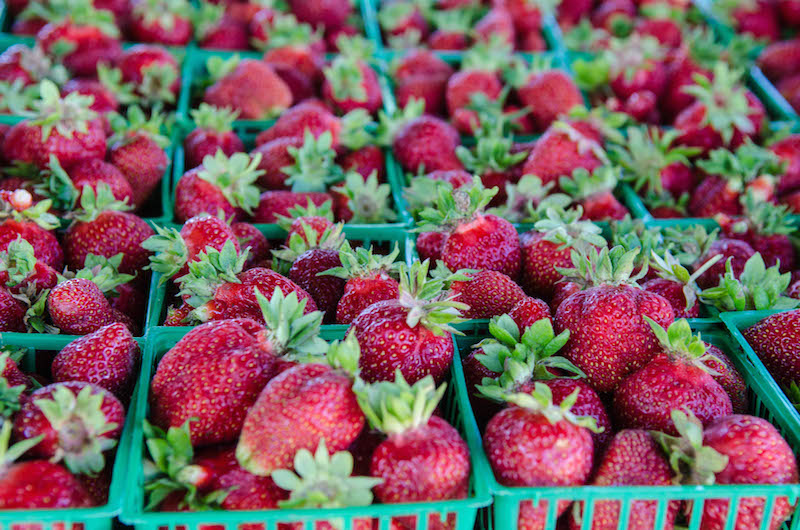The winter was long and hard this year, but surprisingly it is now, when spring begins to show itself, that one’s mood can also be adversely affected. I find myself getting excited when the calendar turns, but then suddenly I am chilled for months. But spring is really here, and with it comes nature’s renewal of energy. Perennials are starting to poke through the soggy earth and represent renewal, awakening and hope. If you are feeling a bit sluggish from the long and unrelenting winter, or the slow start to spring, use the power of the season to help you move forward, break out of your winter eating habits, change up your nutrition and improve your mood. Targeted nutrition therapy has been proven to help uplift our moods, our hearts and our minds.
The connection between food is a daily, if not moment to moment, relationship. We eat because we are bored, lonely or need comfort. We eat or don’t eat when we are stressed, anxious or depressed. We also tend to eat more when we are happy, and mindlessly eat certain foods at parties and celebrations. Emotional eating is a circular relationship — what we choose to eat affects our moods, and in turn our mood determines what and how much we choose to eat.
To start, on one of these dim and rainy mornings when you just want to crawl back in bed, try drinking a full eight ounce glass of plain water before your coffee. Even better, squeeze some lemon into it, or add some cucumber, mint or basil leaves to your glass.
Foods that generally induce mood-supporting benefits include fiber-rich and water-packed fresh fruits and vegetables, fatty fish and shellfish, nuts, seeds, whole grains (not flour), beans and lentils and lean protein-rich foods. Foods to stay away from include sugar, caffeine and alcohol, wheat/gluten (if a person is intolerant), additives and preservatives in processed foods and saturated fats.

Overall, eating regularly and consistently is one of the most powerful things you can do to improve your nutrition. This will help regulate blood sugar and insulin highs and lows that can occur with erratic eating and lead to anxious or depressed moods. Going to sleep and waking up at similar times each day helps, too.
Specific nutrients have also been researched for their role in mood-boosting effects. Among the most promising stars are the B-vitamins, especially folate. Soon we will be able to get our boost of folate with the fresh taste of spring in asparagus and spinach. Broccoli, Brussels sprouts, leafy greens such as kale and citrus fruits are also packed with folate.
Another key mood nutrient is the amino acid tryptophan, the precursor for the “feel-good hormone” serotonin. An optimal serotonin level is believed to help with sleep patterns, stabilizing mood and increasing energy. All meats including poultry, fish and eggs have tryptophan, as do vegetarian protein sources such as seeds and nuts, lentils, beans and soy foods such as tofu.
Another essential amino acid found in protein-rich foods is tyrosine, the precursor to the “alertness” neurotransmitters dopamine, norephinephrine and epinephrine. The omega-3 fatty acids EPA and DHA found in fatty fish, flaxseeds, chia seeds and walnuts may have mood boosting affects in people without depressive or mood disorders. If you don’t regularly eat these foods, a fish oil supplement may help. Current clinical dosing for depression and anxiety, however, requires high and targeted daily doses in supplement form, where EPA exceeds DHA.
There is also a growing amount of research on the relationship between vitamin D and depression. Vitamin D appears to work on the same receptors in the brain that are linked with depression, but we aren’t sure exactly how vitamin D works. Multiple studies have found that people who suffer from depression have lower amounts of vitamin D, but researchers have yet to discover if depression causes low vitamin D levels, or if low vitamin D contributes to depression. Either way, vitamin D is a surprisingly difficult nutrient to get naturally. Not only do we have limited and seasonal sun intensity, but only small amounts are found in foods, such as salmon, tuna, eggs, sardines and some mushrooms. Milk is usually fortified with vitamin D, as are some yogurts, juices and other packaged foods. I recommend talking with your doctor about getting your vitamin D tested to see your level.
Zinc deficiency is also linked with the development of mood disorders, yet many people don’t get enough. Seafood, cashews, beans, including chickpeas and poultry are great sources of zinc. Correcting a zinc deficiency has been clinically shown to improve the symptoms of depression, anxiety and to help treat eating disorders.
Finally, eat your colors! Make sure each plate has a variety of colorful foods. Deep orange, red and yellow fruits and vegetables, in particular, have the carotenoids that have been linked with less depressive symptoms. If the plate looks happy, chances are you’ll be happier, too.
Prudence Athearn Levy is a registered and licensed dietitian living and working in Edgartown. She is co-owner of Vineyard Nutrition (vineyardnutrition.com).




Comments (2)
Comments
Comment policy »